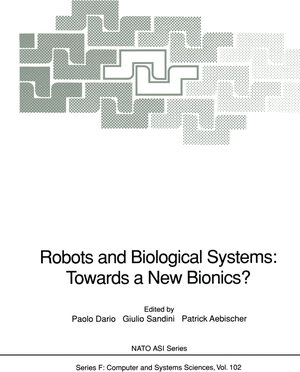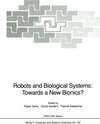
×
![Buchcover ISBN 9783642634611]()
Robots and Biological Systems: Towards a New Bionics?
Proceedings of the NATO Advanced Workshop on Robots and Biological Systems, held at II Ciocco, Toscana, Italy, June 26–30, 1989
herausgegeben von Paolo Dario, Giulio Sandini und Patrick AebischerBionics evolved in the 1960s as a framework to pursue the
development of artificial systems based on the study of
biological systems. Numerous disciplines and technologies,
including artificial intelligence and learningdevices,
information processing, systems architecture and control,
perception, sensory mechanisms, and bioenergetics,
contributed to bionics research.
This volume is based on a NATO Advanced Research Workshop
within the Special Programme on Sensory Systems for Robotic
Control, held in Il Ciocco, Italy, in June 1989. A consensus
emerged at the workshop, and is reflected in the book, on
the value of learning from nature in order to derive
guidelines for the design of intelligent machines which
operate in unstructured environments.
The papers in the book are grouped into seven chapters:
vision and dynamic systems, hands and tactile perception,
locomotion, intelligent motor control, design technologies,
interfacing robots to nervous systems, and robot societies
and self-organization.
development of artificial systems based on the study of
biological systems. Numerous disciplines and technologies,
including artificial intelligence and learningdevices,
information processing, systems architecture and control,
perception, sensory mechanisms, and bioenergetics,
contributed to bionics research.
This volume is based on a NATO Advanced Research Workshop
within the Special Programme on Sensory Systems for Robotic
Control, held in Il Ciocco, Italy, in June 1989. A consensus
emerged at the workshop, and is reflected in the book, on
the value of learning from nature in order to derive
guidelines for the design of intelligent machines which
operate in unstructured environments.
The papers in the book are grouped into seven chapters:
vision and dynamic systems, hands and tactile perception,
locomotion, intelligent motor control, design technologies,
interfacing robots to nervous systems, and robot societies
and self-organization.




